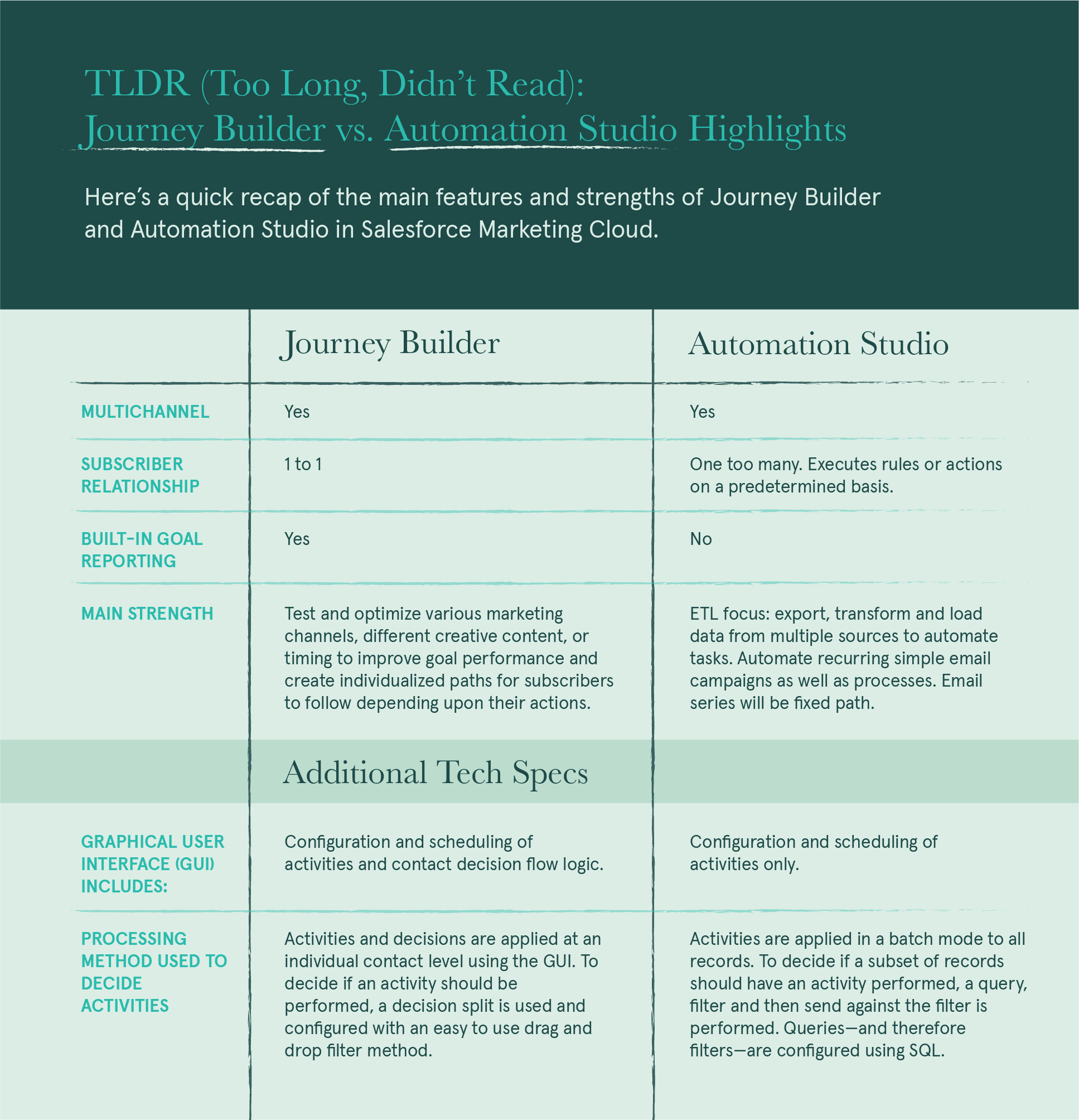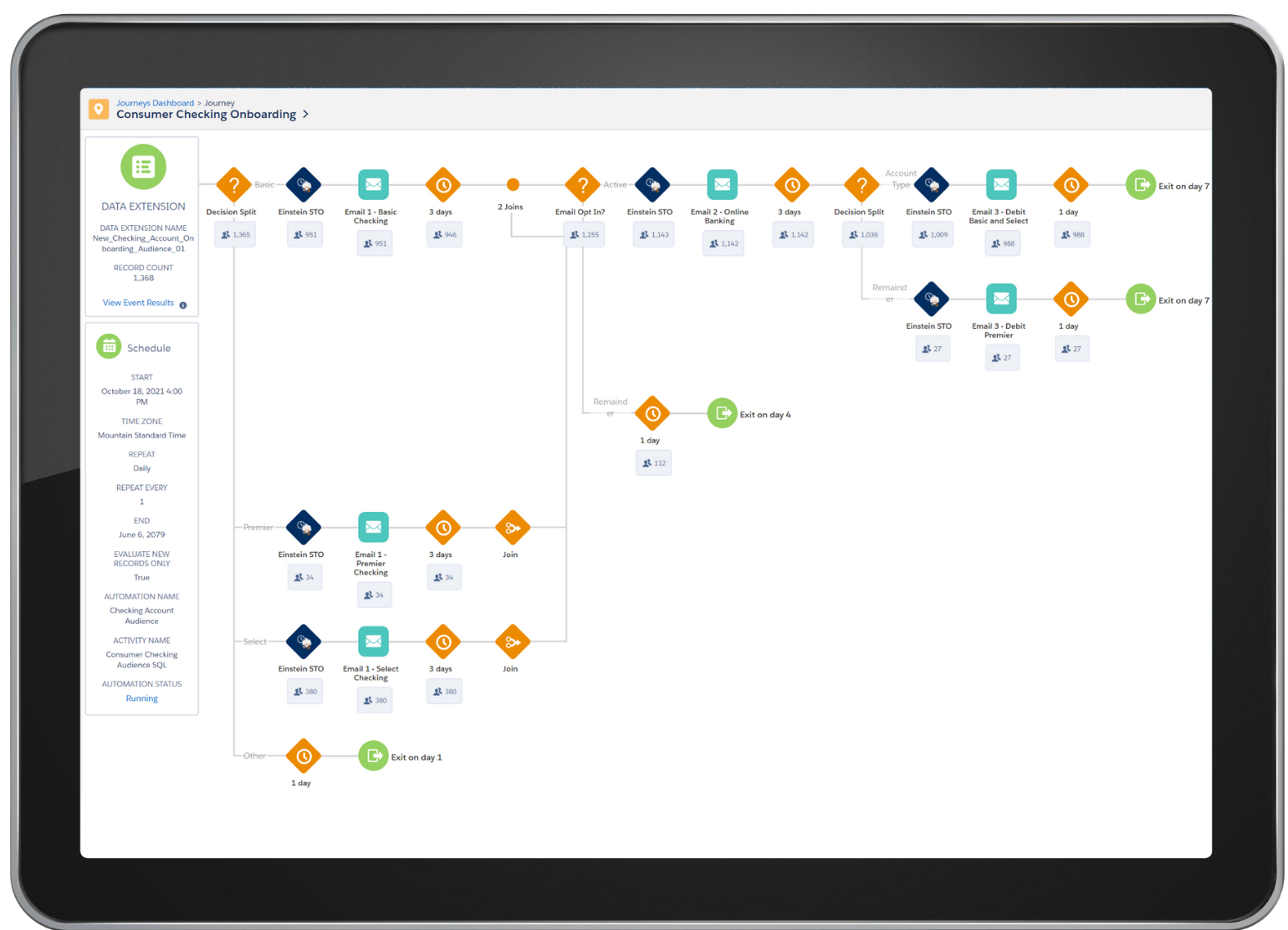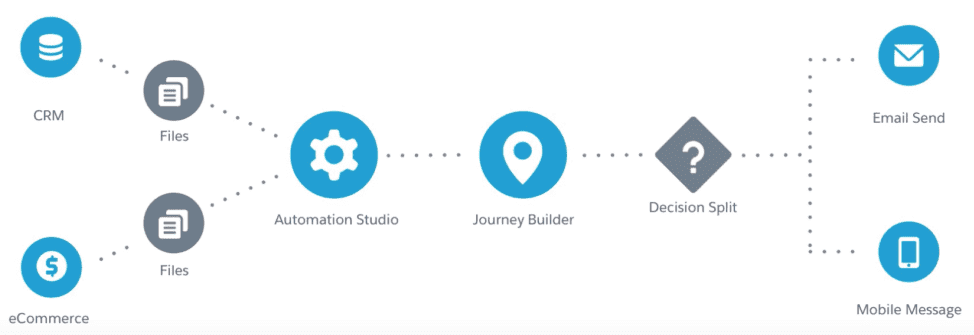Customers expect personalized service and engagement, no matter your industry. And in an industry like banking, where data reigns supreme, customers expect to be known, understood, and their needs anticipated. This includes the onboarding experience. Marketing automation offers banks an opportunity to foster relationships from the outset based on each customer’s preferences, accounts, and interactions in person or online. Salesforce Marketing Cloud offers two robust automation tools: Automation Studio and Journey Builder. The trouble that most banks face, however, is choosing between them and using them appropriately. While they both can be used to send automated communications via email, SMS, and push notifications, their function, design, and capabilities support distinct engagement strategies.

The Nuts & Bolts: Linear vs Dynamic Campaigns
Content strategies vary widely depending on the desired impact on customers and the business. One of the main questions to answer when choosing between Automation Studio and Journey Builder is whether you’ll be using a linear campaign—one that does not change—or a dynamic campaign that examines the customer behavior and acts accordingly.
Linear Content
One-off emails, recurring campaigns, and other standard communications are typically classified as linear communications. This type of marketing often focuses on repeatable segments, using evergreen emails that avoid any specific promotions or dates. Timeless and informative content like How-To’s, Q&As, and step-by-step guides feature static content that doesn’t require time-sensitive or highly personalized details.

Example of a linear marketing automation in Marketing Cloud using Automation Studio
Dynamic Content
Dynamic campaigns change based on an individual customer’s actions (or inaction) with the bank. These behaviors allow you to personalize your customer experiences. Personalization can be desirable when tailoring follow-up content based on how customers interact with an email or if they open new accounts while mid-journey. For example, if a customer clicks one link offering a savings account but doesn’t open the account, your next email could detail the benefits of your savings account program. Another link in the same email may offer them a benefit for opening the savings account. Alternatively, you can encourage them to open an article about how to manage finances. Any action a customer takes will continue to customize their experience and make them more loyal to your bank.

Example of a dynamic marketing automation in Marketing Cloud using Journey Builder
Automation Studio works well for linear communications, especially as it has advanced automated segmentation capabilities. It can connect multiple datasets and will sort customers into particular communication paths. This advanced segmentation can make it easier to sort large audiences based on established strategies. However, once an automation begins, it must run to completion and cannot be edited during the cycle. Subscribers also can’t join in the middle of an automation cycle and must wait for the start of a new cycle.
Automation Studio can also be very useful when sorting new customers into standard communication cycles based on their accounts and activity. For example, if a prospect decides to open a personal checking account, once the account is created, they will then receive a standard set of communications. With the many different types of services available to each banking customer, banks can create automated segmentation rules to guide customers down the appropriate onboarding path to ensure they receive the right information.
Journey Builder is a more flexible option that formulates individual campaigns based on each customer’s data. For example, a customer who clicks an offer for a new feature or account type can be put on a different campaign path than a customer who isn’t interested. The advanced journey options can have unlimited branches and cycles to keep customers engaged beyond their initial sign up.
Journey Builder can also change data points in the CRM profile to keep you updated on customers’ latest activities, including reassigning customers to new reps based on their geolocation. The tool’s Einstein AI capabilities can also improve decision “splits” and send-time optimization. As an onboarding tool, this can help guide new customers’ product awareness for future cross-sell and up-sell opportunities. A dynamic content pathway can be constructed to nurture new customers to engage more deeply with multiple banking products and services.
The Bottom Line
Either marketing automation tool can be used to great effect as part of a larger customer onboarding strategy, but you must determine how they fit into your overall customer engagement efforts. It’s possible to use both Automation Studio and Journey Builder to create a very robust marketing automation process. For example, Automation Studio can use customer data gathered by Journey Builder’s dynamic campaign cycles to further segment audiences and finely target the right people for new campaigns in either Automation Studio or Journey Builder.

However, if you’re just beginning to build a marketing automation strategy, decide which best fits your starting goals and then add complexity as your strategy matures.
Zennify has digitized the client onboarding process for numerous financial institutions. If you’re interested in learning more about how to use marketing automation to support banking customer onboarding, get in touch. Our team of FSC and Marketing Cloud experts would love to speak with you.





